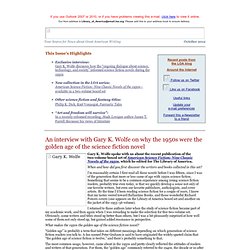

Heroes of History - The Heroic Monomyth. As of July 1, 2013 ThinkQuest has been discontinued.

We would like to thank everyone for being a part of the ThinkQuest global community: Students - For your limitless creativity and innovation, which inspires us all. Teachers - For your passion in guiding students on their quest. Partners - For your unwavering support and evangelism. Parents - For supporting the use of technology not only as an instrument of learning, but as a means of creating knowledge. We encourage everyone to continue to “Think, Create and Collaborate,” unleashing the power of technology to teach, share, and inspire.
Best wishes, The Oracle Education Foundation. Joseph Campbell Myth-Hero Cycle. Escapism Is The Highest Form Of Art. High fantasy. Genre overview[edit] High fantasy is defined as fantasy fiction set in an alternative, entirely fictional ("secondary") world, rather than the real, or "primary" world. The secondary world is usually internally consistent, but its rules differ in some way(s) from those of the primary world. By contrast, low fantasy is characterized by being set in the primary, or "real" world, or a rational and familiar fictional world, with the inclusion of magical elements.[1][2][3][4] Nikki Gamble distinguishes three subtypes of high fantasy:[3] Setting[edit] In some fiction, a contemporary, "real-world" character is placed in the invented world, sometimes through framing devices such as portals to other worlds or even subconscious travels.
High fantasy worlds may be more or less closely based on real world milieux, or on legends such as the Arthurian Cycle. Characters[edit] Many high fantasy storylines are told from the viewpoint of one main hero. Good versus evil[edit] Saga or series[edit] See also[edit] Bildungsroman. In literary criticism, a bildungsroman (German pronunciation: [ˈbɪldʊŋs.ʁoˌmaːn]; German: "novel of formation/education/culture"), [a] novel of formation, novel of education,[2] or coming-of-age story (though it may also be known as a subset of the coming-of-age story) is a literary genre that focuses on the psychological and moral growth of the protagonist from youth to adulthood (coming of age), and wherein character change therefore is extremely important.

History[edit] The term was coined in 1819 by philologist Karl Morgenstern in his university lectures, and later famously reprised by Wilhelm Dilthey, who legitimized it in 1870 and popularized it in 1905. The genre is further characterized by a number of formal, topical, and thematic features.[7] The term coming-of-age novel is sometimes used interchangeably with bildungsroman, but its use is usually wider and less technical. The genre translates fairly directly into cinematic form, the coming-of-age film.
Plot outline[edit] Links.loa. An interview with Gary K.

Wolfe on why the 1950s were the golden age of the science fiction novel Gary K. Wolfe spoke with us about the recent publication of the two-volume boxed set of American Science Fiction: Nine Classic Novels of the 1950s, which he edited for The Library of America. When and how did you first discover the writers and books collected in this set? I’m reasonably certain I first read all these novels before I was fifteen, since I was of the generation that more or less came of age with 1950s science fiction. I returned to these authors later when the study of science fiction became part of my academic work, and then again when I was rereading to make the selection for this two-volume set. What makes the 1950s the golden age of the science fiction novel? “Golden age” is probably a term that takes on different meanings depending on which generation of science fiction readers you talk to. Read the entire interview with Gary K.